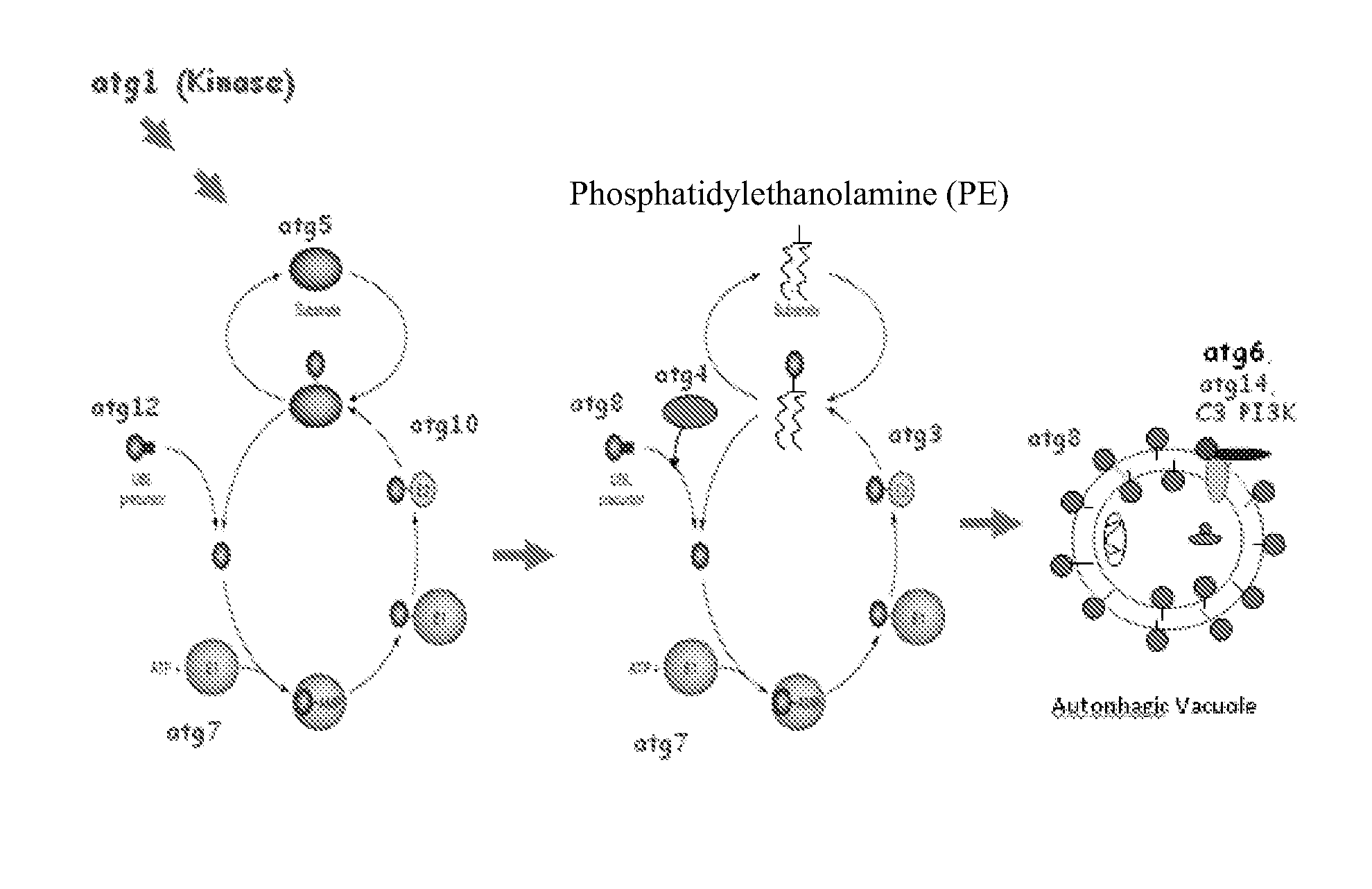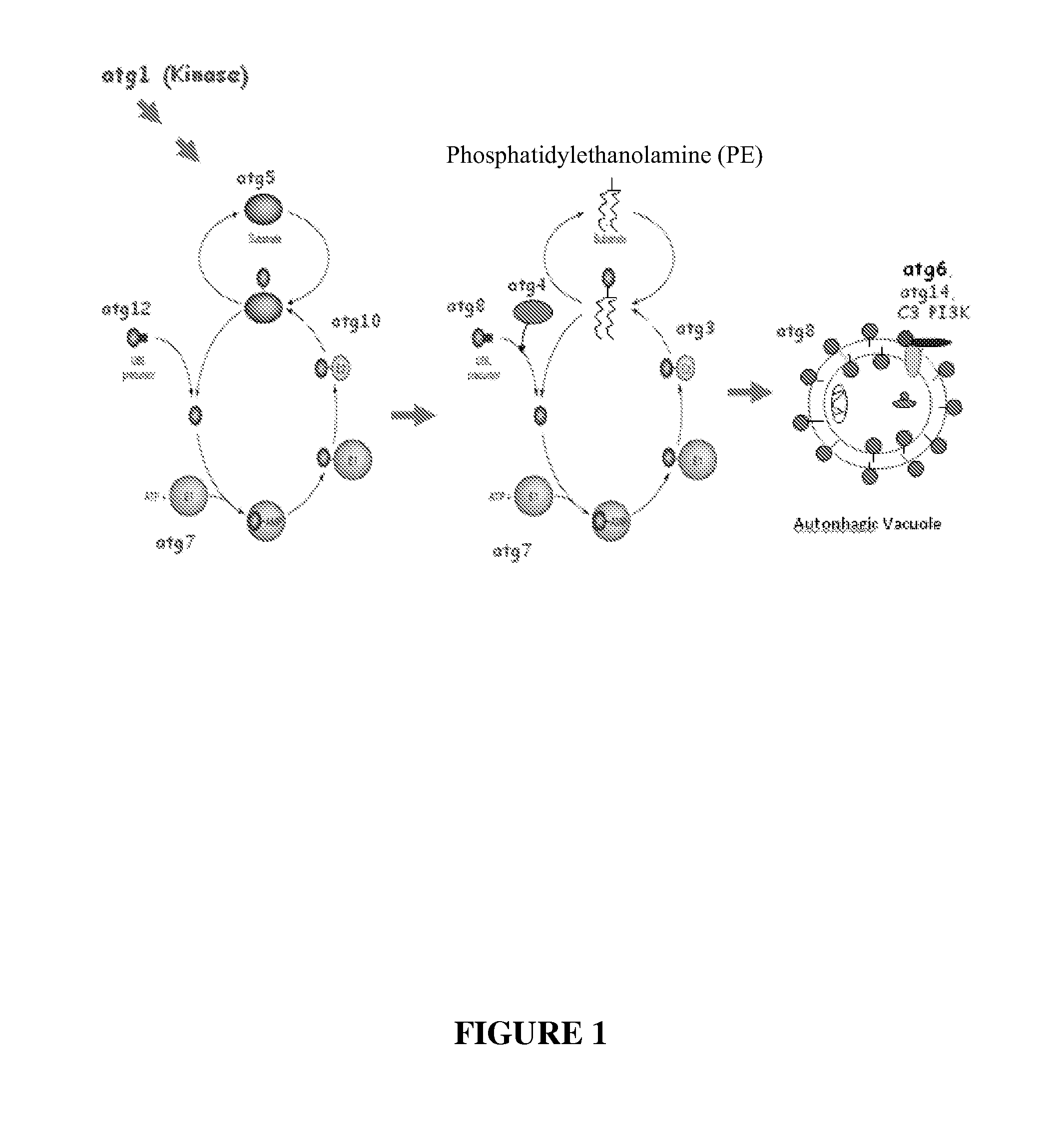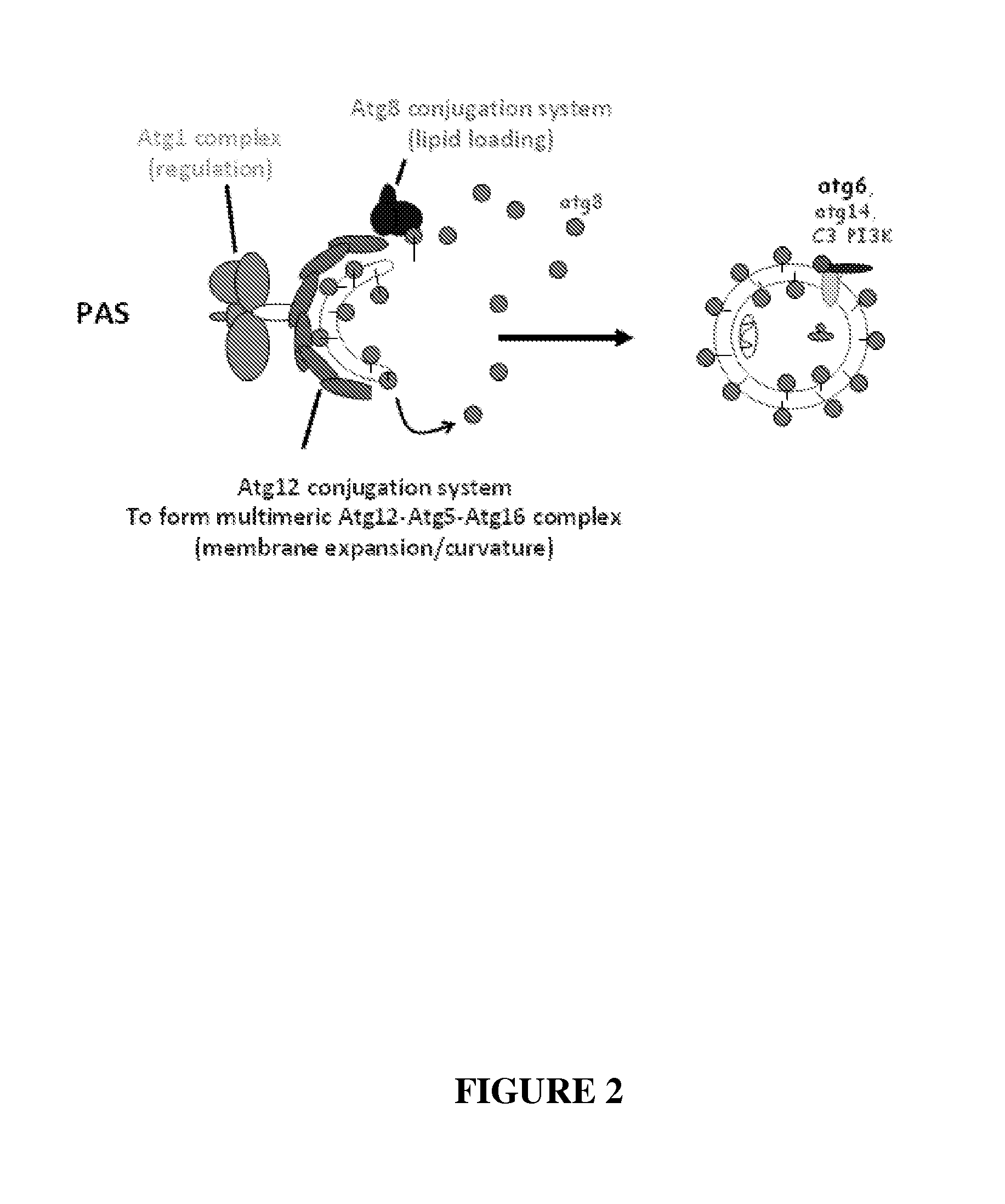Inhibiting obesity progression by inhibiting adipocyte differentiation with a pre-adipocyte autophagy inhibitor
a technology of adipocyte autophagy and adipocyte differentiation, which is applied in the direction of drug compositions, transferases, metabolic disorders, etc., can solve the problems of real threat to the health of people and huge burden on the health care system, so as to prevent, mitigate or treat weight gain or obesity, the effect of preventing or reducing weight gain
- Summary
- Abstract
- Description
- Claims
- Application Information
AI Technical Summary
Benefits of technology
Problems solved by technology
Method used
Image
Examples
example 1
Materials and Methods for atg5− / − Test Data
Adipocyte Differentiation of Primary MEFs
[0071]The MEFs were prepared from 13.5 days embryos of atg5+ / + and atg5− / − mice according to standard protocol. Briefly, whole mouse embryos were removed from the uterus, dissected and the head, tail, limbs and all internal organs were removed. The carcasses were minced, washed in PBS, and then incubated in 2 ml 0.05% Trypsin-EDTA (Invitrogen, CA, US) at 37° C. for 20 min with shaking. The digested cells were plated on a 100-mm dish in Dulbecco's modified Eagle's medium (DMEM, Invitrogen) with 10% fetal bovine serum (FCS, Invitrogen) and incubated at 37° C. in humidified air containing 5% CO2. Cells were grown for 24 hr until the culture was 90% confluent, and then split and passed on. The primary MEF cells of passage three to five were treated under standard protocol to induce adipocyte differentiation (Banks, A. S., et al. Deletion of SOCS7 leads to enhanced insulin action and enlarged islets of La...
example 2
Autophagy was Activated in Wild Type MEFs During Adipocyte Differentiation
[0082]The activation of autophagy in the primary MEFs during adipogenesis via morphology study was analyzed with electron microscopy (EM) as well as by molecular characterization with autophagy-specific markers. Similar to the induction protocol of adipogenesis in 3T3-L1 cells, the primary MEFs were first grown to confluence. Two days after confluence, a cocktail of differentiation agents containing dexamethasone (DEX) / 3-Isobutyl-1-methylxanthine (IBMX) / troglitazone / insulins, was added to the medium to induce differentiation and the time was recorded as Day 0 of induction. Two days later (or on Day 2 of induction), the differentiation maintenance medium (containing only insulin and troglitazone) replaced the original differentiation cocktail. From then on, the fresh maintenance medium was added to the cells every two days to replace the old medium. The differentiation of cells was monitored with a microscope e...
example 3
Autophagy Deficient Primary Atg5− / − MEFs Exhibited Significantly Reduced Efficiency in Adipogenesis
[0086]A functional role of autophagy in adipocyte differentiation was studied by examining the impact of atg5 deletion on adipogenesis in the primary MEF model. Mice with homozygous atg5 deletion (atg5− / −) develop without any apparent defects and are born in normal Mendelian ratios, but die within the first day following birth in part due to failure to cope with neonatal starvation. Measurements of autophagy demonstrated that the formation of autophagosomes was absent in the tissues of the atg5− / − mice. The wild type and atg5− / − primary MEFs from E13.5 embryos of the same pregnant mother were induced for adipogenesis. The progression of differentiation was monitored by microscopy with relief contrast lens. In contrast to wild type (atg5+ / +) MEFs, which underwent normal adipogenesis as shown in FIG. 3A, atg5− / − cells initially accumulated small lipid droplets but seemed to become inert ...
PUM
| Property | Measurement | Unit |
|---|---|---|
| Weight | aaaaa | aaaaa |
| Sensitivity | aaaaa | aaaaa |
Abstract
Description
Claims
Application Information
 Login to View More
Login to View More - R&D
- Intellectual Property
- Life Sciences
- Materials
- Tech Scout
- Unparalleled Data Quality
- Higher Quality Content
- 60% Fewer Hallucinations
Browse by: Latest US Patents, China's latest patents, Technical Efficacy Thesaurus, Application Domain, Technology Topic, Popular Technical Reports.
© 2025 PatSnap. All rights reserved.Legal|Privacy policy|Modern Slavery Act Transparency Statement|Sitemap|About US| Contact US: help@patsnap.com



